Disclaimer: This page contains affiliate links. If you make a purchase from one of the links, Habitot may earn a small commission at no extra cost to you.
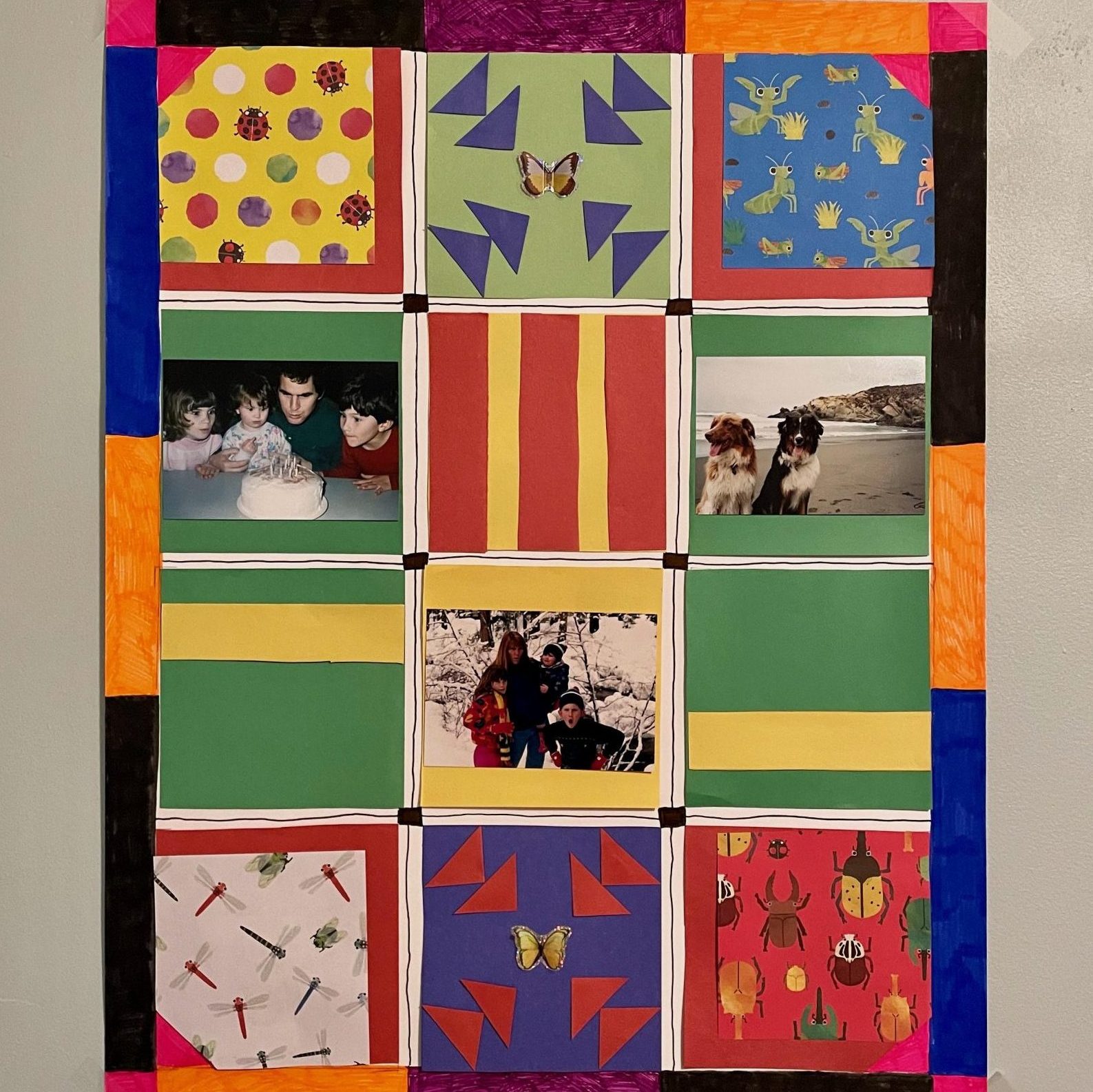
Every year during Black History Month, Habitot families created a community quilt in the Art Studio. Here, we provide some ideas for your family to create a quilt together at home using common materials!
This activity is inspired by the narrative quilts of Faith Ringgold, which are an expression of her identity and her story. She was born at the tail end of the Harlem Renaissance, and was fresh out of art school during the civil rights movement. She combined European composition with her ancestral roots to talk about her life and the lives of those around her. Watch Ringgold tell her own story!
What We’re Learning & Skills We’re Building
- Collaboration
- Storytelling
- Measurement
- Pattern recogntion
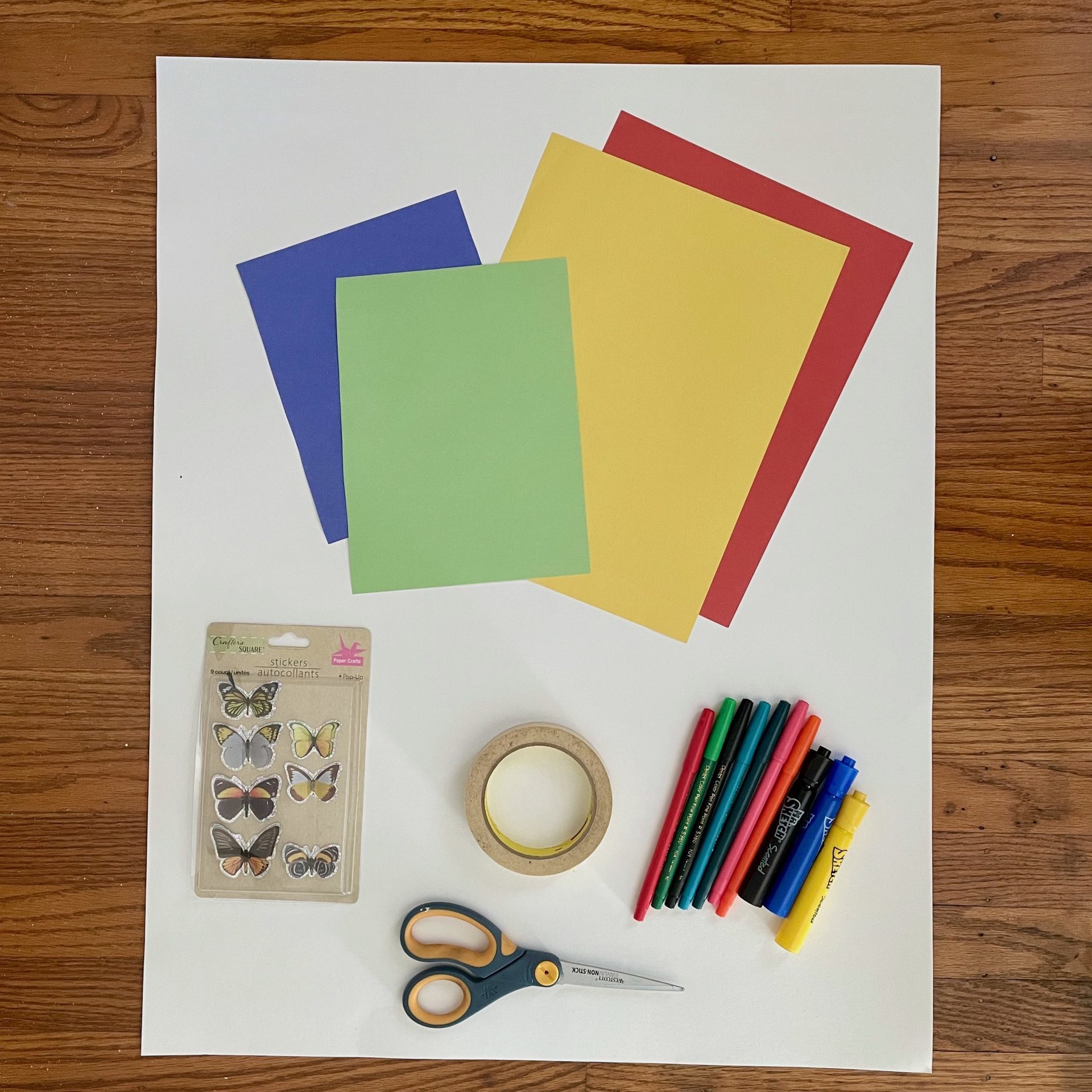
Materials
- A base that’s about 18” x 22” or larger – poster board, poster paper, or cardboard
- Patches to decorate – construction paper, cardstock, or fabric strips cut into 4” x 4” squares (ca. 12)
- Non-toxic school glue, glue stick, masking tape, or scotch tape
- Child-safe scissors
- Washable, non-toxic markers or washable tempera paint
Optional Materials
- Thumbtacks or push pins
- Magazine cutouts, stickers, or craft paper
- Photographs
- Fabric paint and fabric markers
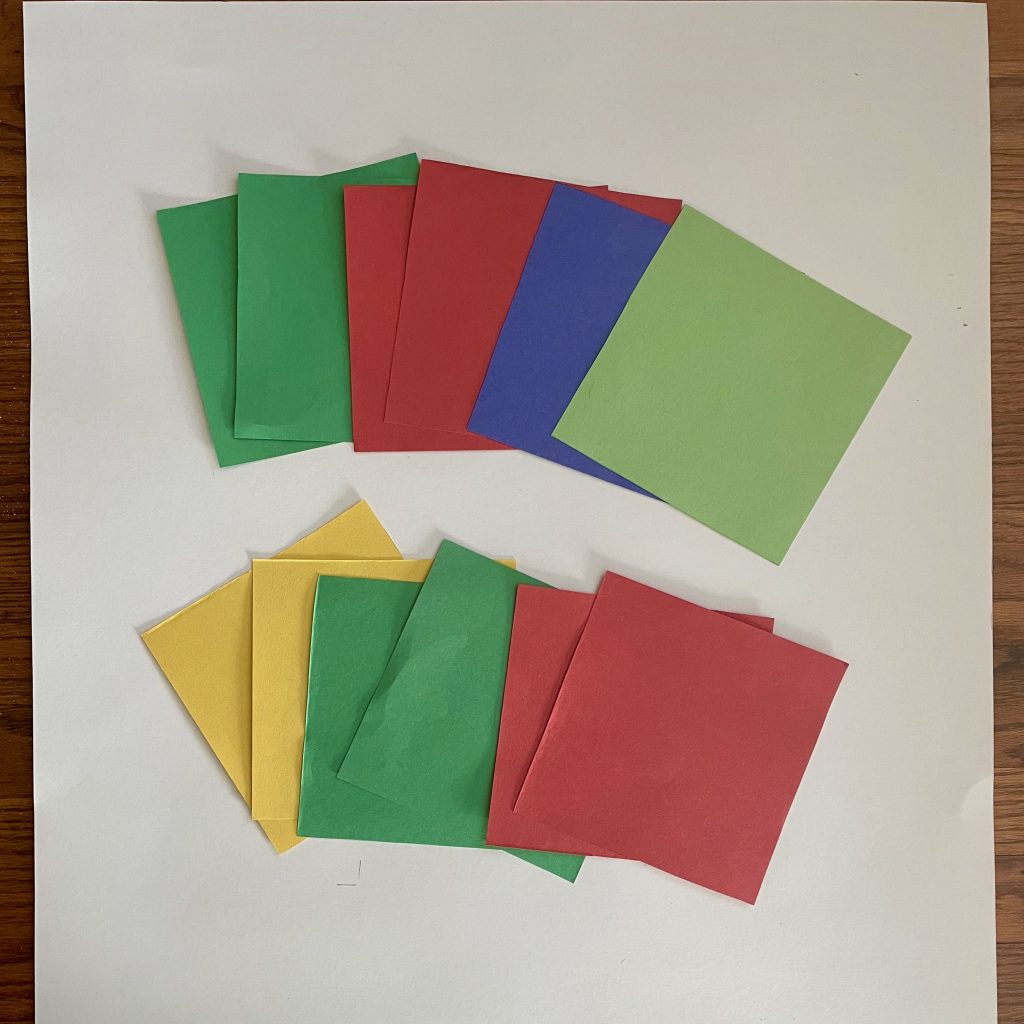
Setting Up
- (Optional) Decorate the base (remind your child that patches will soon be attached to it, covering up a lot of the space).
- (Optional) Hang the base up on the wall using tape, thumbtacks, or push pins so it’s displayed while the patches are added to it.
- Choose decorations and supplies for the patches together with your child. (Note: paper decorations such as magazine cutouts and photographs work well on patches made of paper, but they may not stick to patches made of fabric. Tempera paint, fabric markers, and fabric paint all work better on fabric patches.)
- Cut up the materials for the patches. Square patches should be at least 4”x4” so your child has enough area to decorate. The patches don’t need to be equally sized and they don’t all need to be square-shaped. (Note: fabric patches should be cut by an adult.)
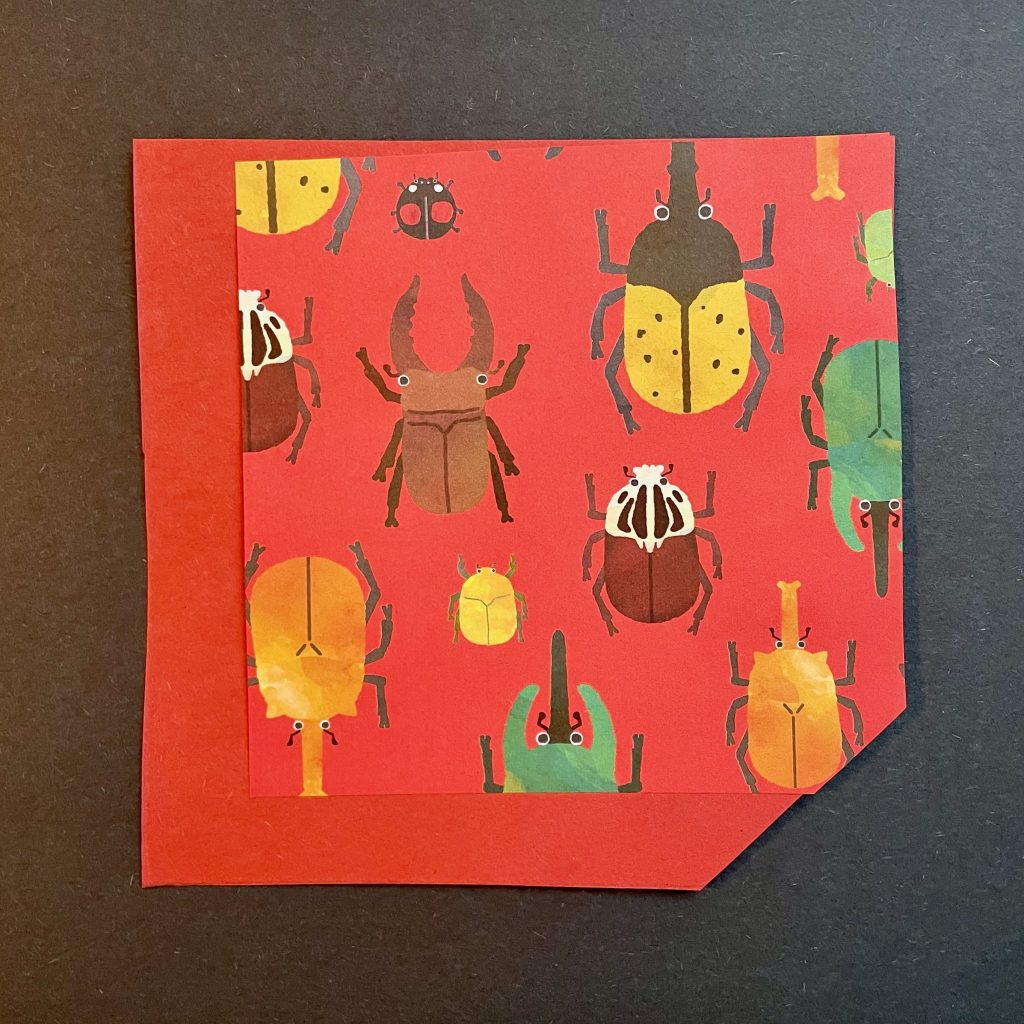
Creating a Quilt Together
Brainstorm
Talk about how you’ll decorate the patches together with your child. Ask, “Will each patch be different and unique? Will the patches tell a story or will they follow a theme when they’re all together on the base? Will they create a pattern on the quilt, or will they be placed randomly?”
Themes
The concept of themes might be abstract for children under 5. To help your child understand what a theme is and then help them come up with one, talk together about:
- Stories from books, movies, and shows
- Places that might be memorable for your child
- Imaginary/fictional characters, animals, and worlds
- Real people, animals, and your child’s life experiences
- Colors and shapes (for very young children)
(Note: a theme or a story isn’t a must for this activity. You can both just decorate patches and fill up the quilt with colors and images.)
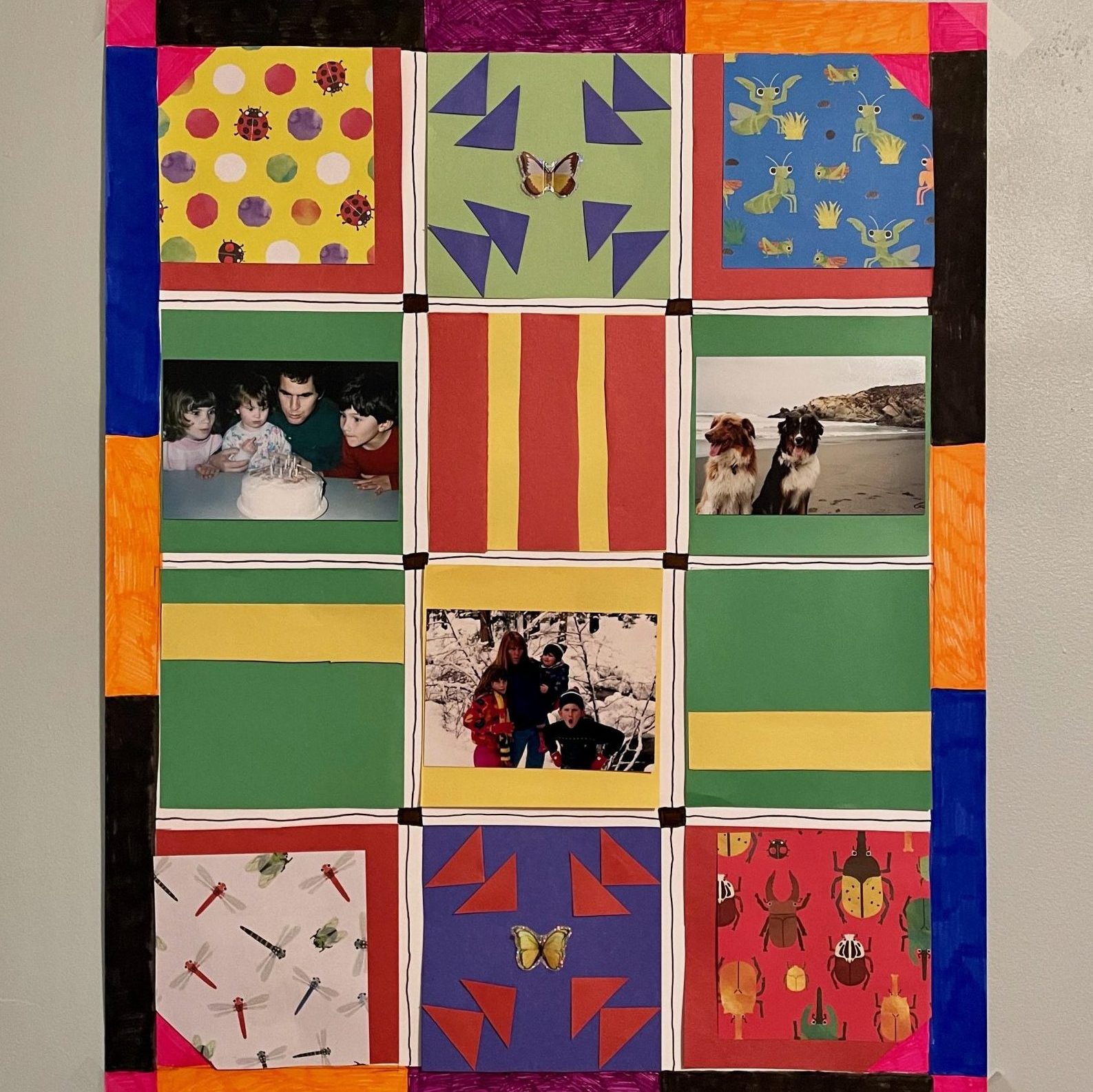
Decorate
Invite your child to work on their own patches, or ask if they’d like you to work on them, too. (We encourage families to work together in this activity.) Talk out loud about your creative process, the colors you’re choosing, and how you’re decorating. Ask your child open-ended questions about their artistic process and what choices they’re making. Once decorated, place the patches somewhere flat to dry. Drying time depends on the patches’ material and what was used to decorate them.
Build the Quilt
Once dry, attach the decorated patches onto the base. Ask, “Where on the base would you like your patches to go?” How they are attached depends on their material and their weight. Patches made of paper can be attached using school glue, a glue stick, or tape loops. The school glue should also be ok for attaching the fabric patches.

More About Ringgold and Other Quiltmakers
- Faith Ringold wrote a children’s book called Tar Beach – a story that captures both the universal wonder of childhood and Ringgold’s own personal experience. You can watch Ringgold read Tar Beach here. (Note: we recommend that parents watch this alone first to make sure they’re comfortable sharing 100% of the language used in this book with their children.)
- This activity is also inspired by the Gee’s Bend quiltmakers of Alabama, a quilting collective that’s been active since the early 1800s. The artists are well known for their use of bold colors, interesting patterns, and resourceful materials.
- Rosie Lee Tompkins – born Effie Mae Howard – was an incredible quiltmaker and artist from Richmond, CA. Her work often combines traditional patterning with modern and eccentric materials. Take a virtual tour of her art exhibited in BAMPFA!

